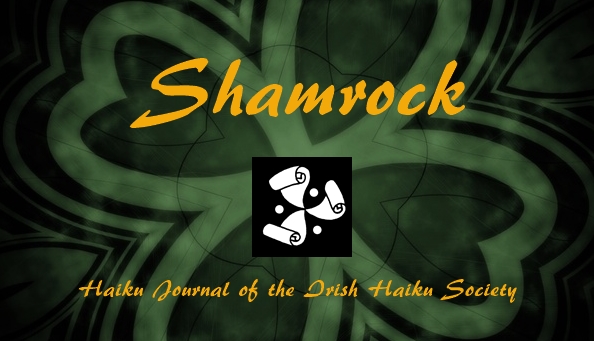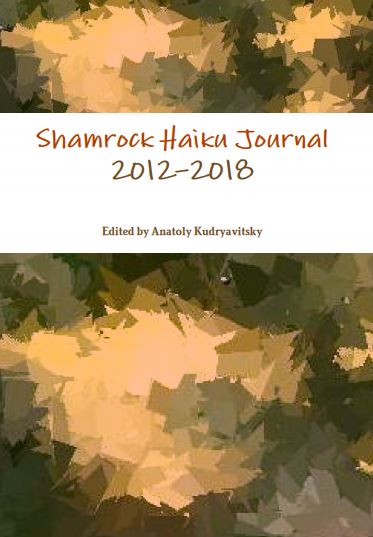the rest of the world
An international online journal that publishes quality haiku, senryu and haibun in English
irishhaikusociety[at]gmail[dot]com
(not for submissions)
Home Page
Archive
Book-Shop

We
are
fourteen years old! Founded in January 2007, Shamrock Haiku
Journal has since been published regularly. On this occasion, we
have prepared SHAMROCK HAIKU
JOURNAL: 2012 - 2018, a print edition of the twenty
issues of Shamrock, Nos. 21 to 40, as they appeared on the
Shamrock website. This paper-based collection covers the full
range of English-language
haiku, from classical to experimental, as well as haibun.
Also included are English translations from one of the most
prominent Japanese haiku poets of the 20th century, Ryuta Iida,
and an essay on translating Matsuo Basho's haiku.
Shamrock
Haiku
Journal: 2012 - 2018
Edited by Anatoly Kudryavitsky.
Copyright © 2012 - 2018 by Shamrock Haiku Journal.
All rights reserved.
Published in Dublin, Ireland.
Printed in the United Kingdom.
Price
Euro
16.92
ISBN 978-0-244-9767-9-8
Trade
paperback.
302 pp.
5.8"x8.3", perfect binding.
Preview available here
Shamrock Haiku Journal Readers' Choice Awards 2020
BEST HAIKU
Nine haiku have been nominated as the best of the year by our readers and contributors. The following pieces that both appeared in our No. 44 were voted the best haiku published in Shamrock Haiku Journal in 2020 (in alphabetical order):
ghost frog...
the ground cracked where
the pond was
-- Keith Polette (USA) #44
from the mist
the wingbeats
of sparrows
-- Bryan Rickert (USA) #44
The following haiku was the runner-up:
abandoned orchard
a split pomegranate
bejewelled by sunrise
--
Simon Hanson (Australia) # 43
BEST
SENRYU
Five senryu have been nominated as the best of the year by our readers and contributors. The following piece that was initially published in our No. 43 became the winner in the best senryu category:
train tracks
the part of me
I left behind
-- Glenn Coats (USA) #43
And the runners-up were the following two pieces (in alphabetical order):
cemetery parking
a bouquet of flowers
on the passenger seat
-- Bouwe Brouwer (the
Netherlands) #43
quarantine –
a street fox looks for a place
to call home
-- Hugh O'Donnell (Ireland) #44
We congratulate the worthy winners, and express our sincere gratitude to each and every reader who cast a vote.
Irish Haiku Society International Haiku Competition 2020
The prize-winning haiku from this competition are available for viewing here:
https://irishhaiku.com/haikucompetition.htm
There are excellent poems aplenty on that page; check them out!
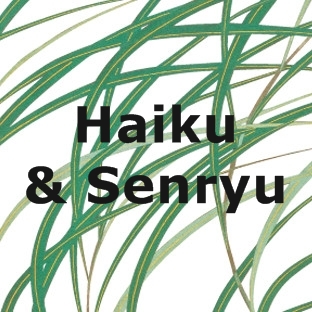
thawing snow
four days of footsteps
come and go
on a path of water
through winter reeds
last year's cygnets
on a ridge above
the white-water weir
honeysuckle's new leaves
-- Thomas Powell (Northern Ireland)
moonshone hedge
a tangle of shadows
within
after dark
flashes of neon
in tinkles of ice
scudded sky
moon and clouds
shadow the fields
-- Simon Hanson (Australia)
silver fish
in a sea of stars
lullaby
honeybee
scented with lilac
fluffing her hair
-- Robert Witmer (Japan)
a cricket
crawls up a stem
prairie sunrise
flurries sift
through the pines
a clutch of snowdrops
-- Brad Bennett (USA)
rain garden
suddenly sharing the bench
with a blue jay
late November
the trees full
of sky
-- Greg Schwartz (USA)
after a downpour,
the garden
of blossoming moons
red leaves
rain washes passerby's shadows
off the pavement
-- Anatoly Kudryavitsky (Ireland)
cherry blossoms...
the color of the dress
i burnt
full moon...
a baby frog leaps
on my bed
-- Rachel Magaji (Nigeria)
too old to shake
a fly from its mane,
the grey mare
-- Michael Dylan Welch (USA)
fingers of clouds
another lost boat
nudges the shore
-- Glenn G. Coats (USA)
bouncing leaves
the wind changes
to a new rhythm
-- Adelaide B. Shaw (USA)
vigil...
the winter wheat bows
in silence
-- Jennifer Hambrick (USA)
bare trees
a flock of swifts
in sudden flight
-- Hannah Mahoney (USA)
rain after long drought
the perfume
of pinon
-- Alanna C. Burke (USA)
worm moon
this pain
bone deep
-- Lori A. Minor (USA)
shuffling blossoms...
another monarch
joins the buddleia
-- Julie Warther Schwerin (USA)
off the back
of a black slug
moonlight
-- Seren Fargo (USA)
summer evening
the stillness
of corn tassels
-- Lori Becherer (USA)
stuck in a puddle,
tadpoles
believe in rain
-- Dan Spencer (USA)
the whisper
of the grass
sunset
-- Stephen C. Curro (USA)
days of rain
a long-grounded boat
shifts starboard
-- June Rose Dowis (USA)
a redbud's veins
magnified
by a dewdrop
-- Mary McCormack (USA)
on the back porch
an empty rocking-chair
comes to a halt
-- Nika (Canada)
mud banks
a heron glides over
the boatyard
-- Robert Davey (England)
morning mist
the worm stretches and shrinks
to nowhere
-- David Gale (England)
midstream
two mallards working hard
to stay put
-- Tony Williams (Scotland)
last rays –
a burst of scarlet-orange
from the robin's breast
-- Mark Miller (Australia)
fish market
all those identical
open eyes
-- Oscar Luparia (Italy)
spring morning
a wasp circles
my daydreams
-- Hemapriya Chellappan (India)
circus stand
the child takes a balloon dog
for a walk
--
Lakshmi Iyer (India)
first seen then heard waterfall in the woods
--
Srinavas S (India)
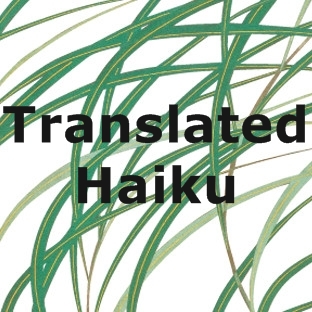
ripe grapes
the earth tastes of honey
the grass of mould
butterfly dreams...
this silky cocoon,
its intricacy
--
Luigi Celi (Italy; translated from Italian by Anatoly
Kudryavitsky)
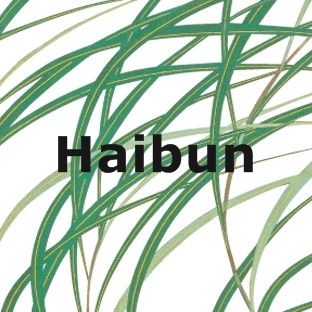
The
Passing of Time
By
Barbara A. Taylor (Australia)
In 1970, I left London, for a romance in gay Paris. In
desperation, the demise of that relationship sent me fleeing
Downunder to the other side of the world. How else could one
cope with the intrusion of another lover?
broken-hearted
local wine's the best
wherever you are
Way back then, I was filled with a vital energy to explore the
globe: hitchhiking around/across Australia, Asia, into
Afghanistan to Iran, through to Turkey, back to Paris, before
returning briefly to my roots in Northern Ireland to visit
family after many years apart. I had lots of yarns, adventures
to share. Mother told me how father looked forward to my
homecoming. It was a shock to arrive in bustling Paris once
again, but then, even more so: on arrival, a telegram says
papa has gone...
We watched the hearse, and mourners under black umbrellas,
move slowly down the curved white-fenced avenue as if in a
Luis Buñuel movie. It was a typical Ulster day of soggy rain
and mists, army tanks, and police checks. My older brother
opined women do not attend funerals. I never understood his
inane protest and made my attendance present. My grieving
mother stayed at home behind closed blinds. All her world had
changed. Valium kept her calm. Emptiness ruled.
open to miracles
at each turn
of the door handle
After gloomy weeks, relief comes on arriving in the safety and
comfort of this happy farmhouse cottage in regional New South
Wales; early morning calls of kookaburras, daily cackles of
chickens, my perfumed garden still in tact, and mobs of
wallabies munching on dewy grass. Various trees bear fruit.
Life abounds in a brilliant light. Sun, sun, and still more
sun. Anxiety, depression, sadness dissolves. This
hundred-year-old home with all its creaks and imperfect
angles, overflows with warmth, strength, sustainability.
Sadly, it's doubtful I'll view the Emerald Isle again; never
see those haystack patterns in patch-worked fields, tall
hawthorn hedges, nor scarlet fuchsia spilling over granite
walls. How I wish my parents had visited, for here they could
see our perfect rainbows. It is the greenness I love. Since
mother too has now gone, guess I will be here forever. Future
travels not under consideration but plenty stories yet to
tell.
rich humanity
exudes from well-trampled
timber floorboards
Taking
Flight
By
Michael Dylan Welch (USA)
I have a walking alarm clock. It's loud. This morning it
bounds up to the edge of my bed. It yells, "Wake up, daddy!"
"I'm awake," I mumble to my son.
"Wake up your eyes!" he replies.
I lie still for a moment, but I know it's useless. I can no
longer resist my three-year-old fire alarm. So I rub out the
night and slowly wake up my eyes.
"Good morning, daddy," Thomas announces, pulling at the sheets
until I swing my legs out of bed.
"G'morning," I sigh.
And so begins our Sunday, for which we have a family trip
planned to the flight museum.
soggy corn flakes –
my son tells me
to put a smile in my mouth
Fear
and Trembling
By Diana
Webb (USA)
As a child I was always alert to the slightest suggestion.
From a car from a cat from a crow. I would look up into the
sun-tinged clouds for a sign of the angel instrument poised to
blow the final note.
from trumpet-shaped flowers
the solace of silence
how bindweed clings
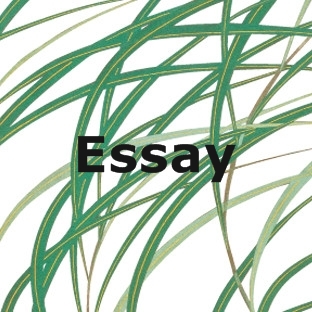
A
Home for Haiku
By
Anatoly Kudryavitsky (Ireland)
Poetry resides in poets' heads, but what about its more
material incarnation? Stones of poetry are mossless; mosses
of poetry are quilts for a quiet...
Do haiku have a home? In the year of 1670, i.e. in the
Genroku Period, Matsuo Basho was on the road travelling from
Kyoto along the bank of Kiyotaki river to Arashiyama and
further to Mount Hiei, composing haiku along the way, and he
spent a few nights in a cottage near the Kompuku-ji temple.
This temple was founded in 864 by a monk named An'ne, the
head priest of Enryaku-ji temple, according to his master
En'nin's dying wish. Basho really liked it there and later
kept coming back to write. Tesshu, Basho's friend and the
head priest of Enko-ji, afterwards called that humble abode
Basho-an, Basho's Hut.
Less than a century later, in 1760, the haiku poet and
artist Yosa Buson visited the area but couldn't locate the
cottage. Some women and children eventually led him to it.
Buson, who admired Basho, was saddened to find the
cottage in a most ramshackle state. In 1776, following the
suggestion of his friend Higuchi Doryu and encouraged by
Shoso, a priest of Kompuku-ji Temple, Buson began rebuilding
Basho-an. His haiku disciples, Hyakuchi and Emori Gekkyo,
assisted him and Doryu. The work took almost five years, and
was finished in 1781. For the roof, Buson used Japanese
pampas grass (miscanthus); this thatched roof now hides
among the trees. Here's one of the six haiku that Buson
reportedly wrote in Basho-an: all ploughing done / the cloud
that seemed unmoveable/ now gone (the translation is mine).
In December 1783, when Buson passed away aged 68, his
disciples buried him on the top of the hillock just above
Basho-an. Some of them were later laid to rest next to
Buson's grave, with "poem-monuments" above their graves;
among them, the artist Gekkei Matsumuro and haiku poets
Gekkyo and Yoshiwake Tairo.
A century after Buson's death the temple itself
deteriorated, but the famous samurai and Zen master Tesshu
Yamaoka rebuilt it. The main gate is hiding from a
passer-by, and one has to know where it is to enter. A path
goes from there towards Basho's hut and then through a
little graveyard towards Buson's grave. In autumn, the path
and the thatched roof are strewn with red maple leaves. This
temple was also the setting of the last part of 'Lifetime of
a Flower' by Seiichi Funahashi, the classical novel
about Takajo Murayama, a former geisha turned a spy. This
novel was later made into a feature film, as well as
into a television series. Takajo Murayama, who lived in the
19th century, stayed in this temple as a nun for fourteen
years, until she passed away. The belongings of Yosa Buson
and Takajo Murayama are displayed in the main hall. A stone
monument to Basho, erected by Buson, is in the heart of the
temple's garden. If haiku were to have a home, this would be
it.
First published in the Haiku
Society of America Newsletter, December 2020
